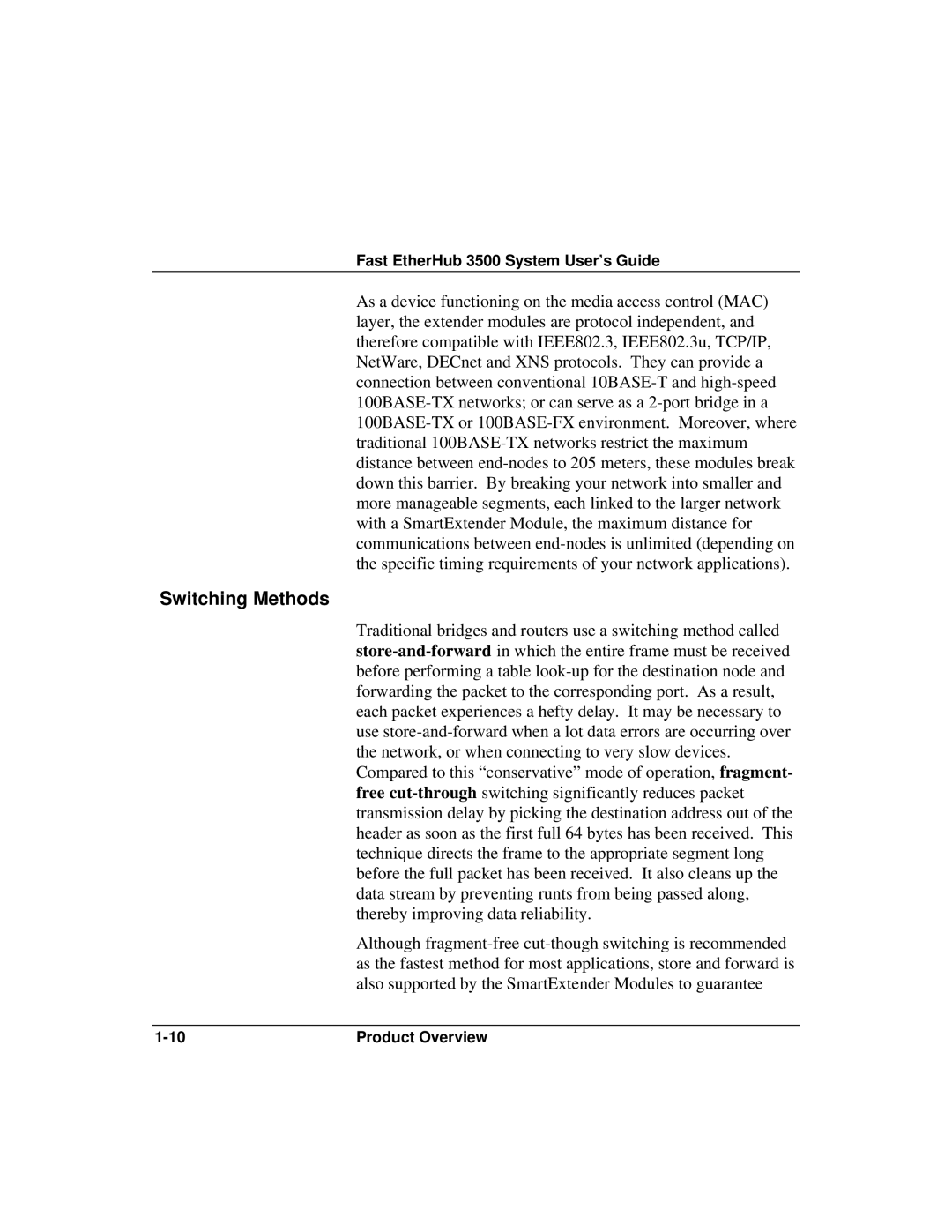Fast EtherHub 3500 System User’s Guide
As a device functioning on the media access control (MAC) layer, the extender modules are protocol independent, and therefore compatible with IEEE802.3, IEEE802.3u, TCP/IP, NetWare, DECnet and XNS protocols. They can provide a connection between conventional 10BASE-T and high-speed 100BASE-TX networks; or can serve as a 2-port bridge in a 100BASE-TX or 100BASE-FX environment. Moreover, where traditional 100BASE-TX networks restrict the maximum distance between end-nodes to 205 meters, these modules break down this barrier. By breaking your network into smaller and more manageable segments, each linked to the larger network with a SmartExtender Module, the maximum distance for communications between end-nodes is unlimited (depending on the specific timing requirements of your network applications).
Switching Methods
Traditional bridges and routers use a switching method called store-and-forwardin which the entire frame must be received before performing a table look-up for the destination node and forwarding the packet to the corresponding port. As a result, each packet experiences a hefty delay. It may be necessary to use store-and-forward when a lot data errors are occurring over the network, or when connecting to very slow devices. Compared to this “conservative” mode of operation, fragment- free cut-throughswitching significantly reduces packet transmission delay by picking the destination address out of the header as soon as the first full 64 bytes has been received. This technique directs the frame to the appropriate segment long before the full packet has been received. It also cleans up the data stream by preventing runts from being passed along, thereby improving data reliability.
Although fragment-free cut-though switching is recommended as the fastest method for most applications, store and forward is also supported by the SmartExtender Modules to guarantee

